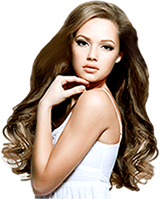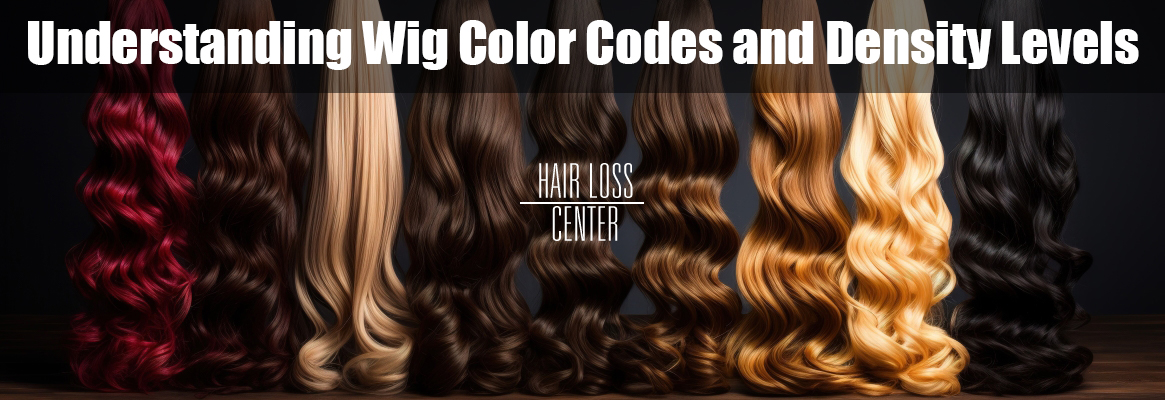
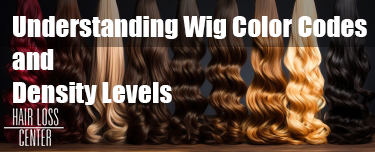
Understanding Wig Color Codes and Density Levels: What’s the Best for You?
The world of wigs is huge nowadays and it has made it possible for people to find a wig that matches their preferences. However, to select a wig that creates your desired look and feel, you should be familiar with wig color codes and density levels.
These wig characteristics might seem a bit confusing at first, but choosing the right wig for yourself depends on them.
That’s why, we have put together a simple guide to help you understand the different options you have when selecting a wig. This article will also provide some insights into what wig color and density look best on you.
Don’t know if wigs look good on you?
We are here to help you find out. Call Newport Hair Loss Center in San Diego, Los Angeles, and Orange to schedule a free consultation session with our experienced wig experts.
Everything You Should Know About Wig Color Codes
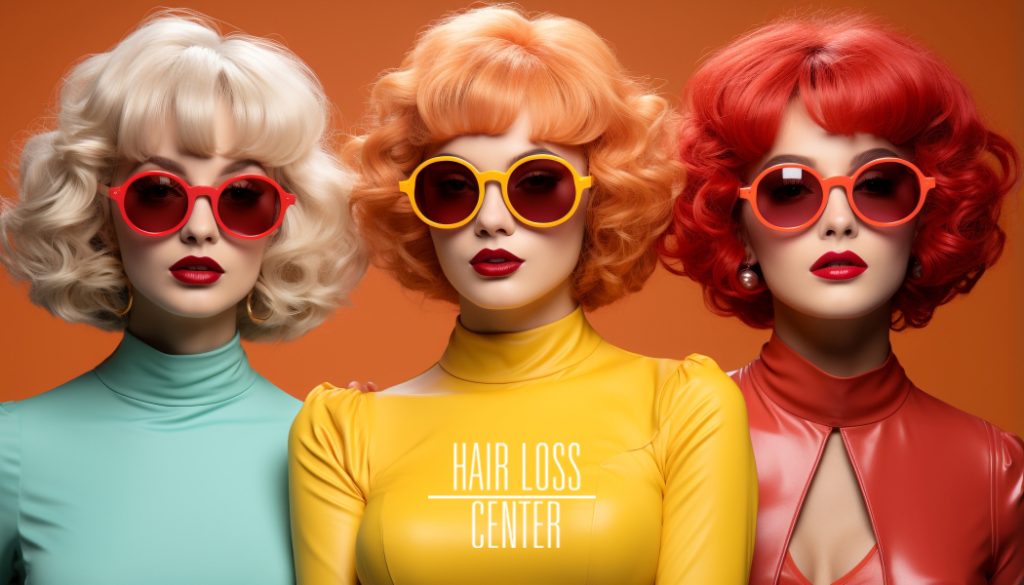
One of the first things that comes to our mind when thinking about selecting a wig is the color. Choosing a most flattering color is one thing and understanding the meaning of all the codes and numbers in a wig color chart is another.
So, let’s first learn about the hair color number system, then we’ll discuss how to maintain a colored wig and what factors you should consider when choosing a wig color.
What Do Wig Color Codes Mean?
Every wig hair color is coded. If the wig has only one color (the base color), the code includes one number. But if there are highlights, lowlights, and color dimensions, then there’s a secondary code to indicate them.
The Wig Base Color Numbers:
This number usually ranges from 1 to 30; from the darkest to the brightest. So,
- numbers 1 to 4 correspond to black and dark brown,
- 5 to 10 cover medium brown and light brown,
- 11 to 15 include auburn or red tones,
- 16 to 23 cover shades of blonde,
- and 24-30 correspond to platinum or silver tones.
Sometimes, wig color codes go higher than 30 to include different variations of blonde, such as ash blonde, strawberry blonde, and golden blonde. Vibrant colors, like blue, red, pink, and green, are also shown by numbers above 30. This coding system can vary a little depending on the wig manufacturer.
The Secondary Numbers and Letters in Wig Color Codes:
The highlights and lowlights are often shown with numbers and letters.
For example, H or HL represents highlights and the number next to them shows the shade. Also, L or LL represents lowlights. So, the code L4 means dark brown (4) lowlights.
In addition, the depth and richness of the color (color dimension) are represented with different letters. They may include
- R for red and copper tones,
- B for blue tones,
- A for ash and cool tones,
- P for pink tones,
- and T to indicate a two-tone color.
For example, the code 2T30 indicates dark brown roots (2) with blonde tips.
Please note that each manufacturer has their own wig color codes. While the whole idea is the same, the specific numbers and symbols may differ. For instance, some wig color charts use letters in the coding system, but others only rely on numbers. In such charts, the code 4/22 would mean dark brown with blonde highlights.
Therefore, it’s always necessary to check the wig manufacturer’s color chart when you want to choose a color.
Tips to Maintain the Vibrancy of the Wig Color
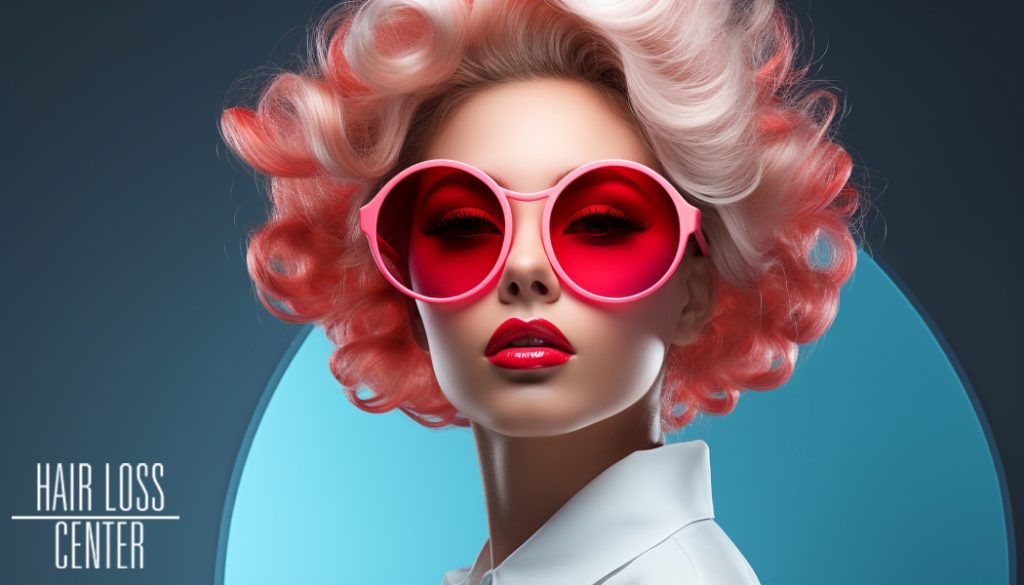
We have already discussed how to maintain your wigs properly to expand their lifespan. Here are some must-know tips for those who use colored wigs.
- Use gentle color-safe shampoos and conditioners specifically formulated for wigs.
- Avoid frequent washing.
- Use lukewarm water when washing the wig and massage the shampoo gently on the hair.
- Even if the wig is human hair or heat-friendly synthetic hair, limit the heat-styling to a minimum. So, air dry it after washing and use low-heat tools for styling if necessary.
- Protect the wig from direct sunlight and UV rays.
- Store your wig in a dark place, like a closet. Plus, don’t forget to put it on a wig stand.
- Using color-depositing products to restore the wig color is recommended.
- Have a professional trim the hair ends every one or two months if you wear it every day. The fading usually starts from the ends, so trimming them helps your wig to look fresh.
- Any styling products, like mousses and hairsprays, dull the color over time. So, only use them when necessary.
- While it’s possible to dye some wigs at home, it’s highly recommended to have them dyed by a professional if you want to change the color.
The shine and vibrancy of the color play a big role in how good the wig looks. Therefore, trying to preserve the color is an important part of a wig maintenance routine.
What Wig Color Is Best for You?
To choose the most flattering wig color for yourself, there are a few factors to consider.
- The best color wig is usually the one that is just a little lighter or darker than your own hair color. Or it’s exactly the same. Nowadays, many wig manufacturers offer custom colors. So, it’s easy to get a wig with the exact color you desire.
- If you want to experiment with other colors than your natural hair, consider your skin tone. For fair and cool skin, ash blondes, shades of brown, and red shades look the best. Also, for warm and olive skin tones, golden, honey, and reddish tones look flattering. And, for darker skin, auburn, brunette, and black are good choices.
- Another factor that helps you determine the best wig color is your eye color. If you are lucky to have brown eyes, you can nicely pull off different hair colors. However, for blue eyes, blonde is usually the best match. Besides, pairing green eyes with reddish hair colors is a classic beauty.
- If you’re not sure, you can get help from AI-powered tools to see how a wig will look on you. Read ‘Comfortable Wigs with the Help of AI’ for more information.
Overall, as wig color is a significant factor in determining how natural your wig looks, checking the manufacturer’s wig color codes chart or requesting to see the hair color swatches before purchasing is essential. Plus, never forget that a wig will look fresh as long as the color is vibrant.
Wig Density Levels; What Will Look Most Natural?
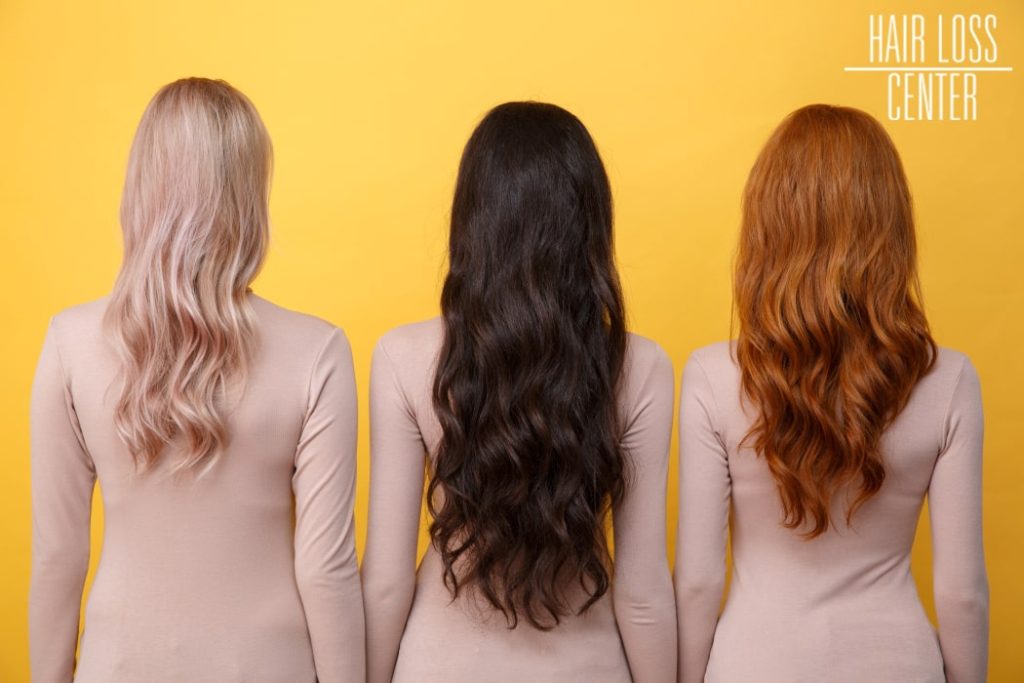
Another set of options you have when selecting a wig or a hairpiece is its density level, which refers to the number of hair fibers in each square inch of the cap. There are four different levels.
Light Density Wigs:
Light or low-density wigs or top pieces have around 80 to 100 strands of hair in each square inch. They look a bit thin but there are several advantages.
- The wig is lighter and more comfortable. So, it’s easier to wear.
- It looks more natural and more difficult to spot.
- Each hair strand is more visible compared to higher densities, which adds to its natural look.
- It can be a good choice for warm seasons.
Medium Density Wigs:
There are about 100 to 120 hairs in each square inch of medium density wigs. Those who wish to have a balance between volume and natural look should go with this density level.
Besides, although they’re not as light as low-density wigs, they are a good choice if you wish to experiment with different hairstyles.
High Density Wigs:
If you’re into voluminous and fuller styling, you should select a wig with high density. They come with 120 to 180 hair fibers per square inch and look thick and lush. So, they’re perfect for creating glamourous curls and updos.
They can be a little heavy but you’ll have that luxurious and bold hairstyle you’re looking for.
Extra High-Density Wigs:
Some manufacturers also offer wigs with extra high densities with more than 180 hairs per square inch. They’re too thick and, therefore, not very natural-looking. Because of their doll-like appearance, they’re usually used for fashion and specific purposes.
To sum up, wigs come with different density levels that not only affect their look, but also how comfortable they feel on the head and how easy it is to manage, maintain, and style them. So, you should consider the factors below and choose the right level.
Factors to Consider When Deciding a Wig Density Level
Aside from your personal preferences, the following factors can help you go with a choice that will look more flattering.
- For smaller and rounder faces, thinner wigs complement the facial features better.
- For angular faces, wigs with higher densities will be more flattering.
- If your own natural hair is thick and coarse, low-density wigs are recommended. Also, if your own hair is thin and fine, it’s better to go with higher densities.
- Consider how much time you can allocate for your wig maintenance and styling. Light-density wigs are generally easier to manage and maintain. On the other hand, high-density wigs mat and tangle more easily and you should be more careful when wearing, storing, styling, and washing.
- Medium and high-density wigs can be styled in various ways. But thinner wigs are easier to style.
Order a top-quality custom European hair wig or a wig from your own hair that matches your preferences and needs. Call for more information.
FAQs About Wig Color Codes and Wig Density Levels
Here are the answers to some of your common questions about choosing a wig.
Is It Possible to Dye My Wig at Home?
Yes. Some wigs can be dyed with wig-safe colors and special techniques. It’s better to ask a professional to color your wig. However, you can also do it at home. Read ‘Dye Your Wig at Home’ for some guidelines.
How Can I Decide What Wig Size to Buy?
A wig shouldn’t be too tight or too loose. If it’s possible, try on different wigs to find out the size you feel more comfortable with. The wig experts also help you choose the best size. But if you want to buy online and you’re not sure about your head size, read our guide on ‘Finding the Right Wig Size’.
For Wigs with Bold Colors, What Density Level Is Best?
For bold colors, it’s best to opt for wigs with higher densities.
How Can I Match a Wig Color with My Natural Hair?
It’s a bit tricky. The best way is to request a custom color if the manufacturer offers the option. If not, you should request wig color swatches and compare them with your own hair color in daylight. Also, you can purchase a virgin hair wig (a wig with real hair in its natural color) and ask an experienced stylist you trust to match it with your hair color.
What Types of Wigs Have Higher Density, Human Hair Wigs or Synthetic Wigs?
Human hair wigs come usually with higher densities than synthetic wigs.
Human Hair Wigs Are Natural and Easy Solutions for Your Hair Loss
Whether you’re looking for a medical wig to cover hair loss or you just wish to make a change, understanding the wig characteristics discussed above is necessary. But, if you’re still uncertain, it’s not a problem.
You can always count on us to help you choose the best wig that suits your needs and preferences. You can find any kind of high-quality human hair wigs and hair pieces at Newport Hair Loss Centers in Southern California (Los Angeles: 310-991-0087, San Diego: 949-640-4247, Orang: 949-322-9555).
Besides, you can consult with our wig experts about other aspects of purchasing a medical wig, such as insurance coverage and financial help. We’re here to provide any support we can.
LA OFFICE
Beverly Hills
8383 Wilshire Blvd, First Floor
Los Angeles, CA 90211
ORANGE COUNTY OFFICE
NEWPORT BEACH
240 Newport Center Drive, Suite 111
Newport Beach, CA 92660
SAN DIEGO OFFICE
LA JOLLA
4660 La Jolla Village Dr. Suite100
San Diego, CA 92122
NEWPORT HAIR LOSS CENTER
Newport Hair Loss Center gives hair loss sufferers a way to restore their appearance and boost their confidence, whether they are suffering from trichotillomania, alopecia, or are currently going through chemotherapy.
Site Map
